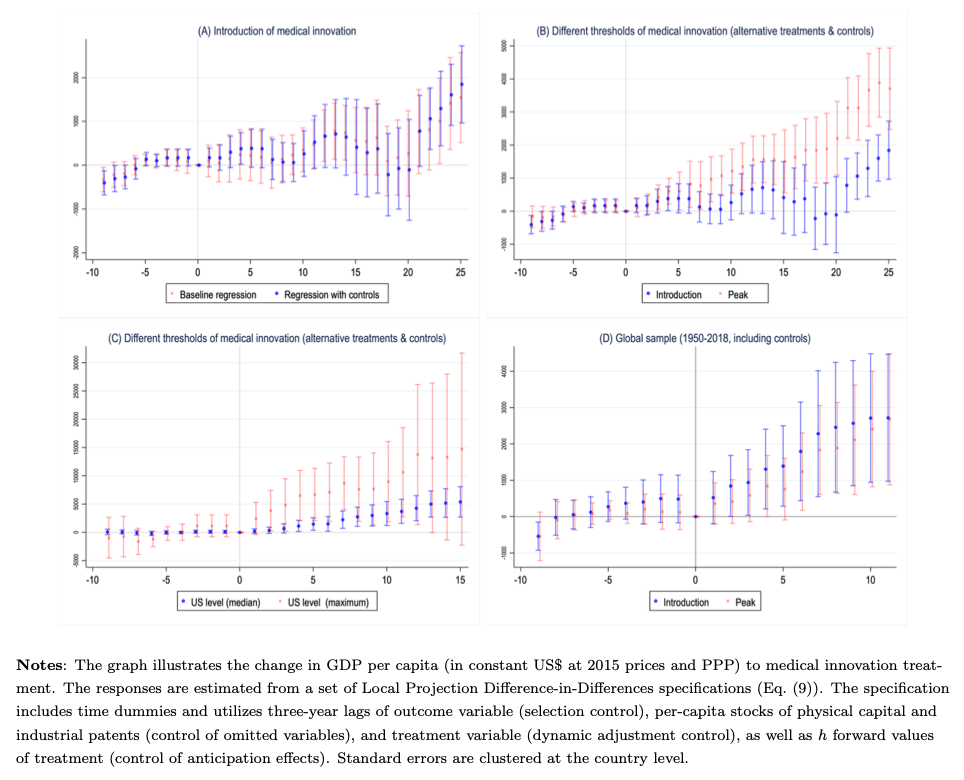From Innovation to Longevity: The Complex Economic Impact of Medical Progress
- Dr Francesco Venturini

- Sep 4
- 3 min read
Population aging is one of the most significant societal trends of our time. Historically, average global life expectancy remained below 30 years until the First Industrial Revolution. Over the past two centuries, however, it has increased dramatically, reaching more than 70 years worldwide by 2019 and surpassing 80 years in many advanced economies. This remarkable achievement reflects not only rising living standards but also the profound impact of medical advances and technological progress.

While increased longevity reflects improvements in economic and health conditions, it also challenges the scope for future economic development. In a study conducted with Michael Kuhn, Antonio Minniti, and Klaus Prettner, we explore the ambivalent relationship between medical innovation, life expectancy, and economic growth. Two key questions guide this study. First, how exactly does medical innovation contribute to economic growth, and through what mechanisms? Second, are these effects consistent across all stages of development?
Medical innovations significantly influence both child survival and adult longevity, thereby altering population growth rates and age structures. Advances in medical technology have increased the demand for healthcare services. This creates a resource trade-off: more labor allocated to healthcare implies fewer resources available for industrial R&D, potentially dampening productivity growth. Medical and industrial R&D may compete for resources, acting as substitutes, but they may also be complementary. Industrial technologies, such as imaging and robotics, often form the basis for medical applications, while a healthier and longer-living workforce supports industrial innovation.
Using historical data from 1890 to 2019 on patentable medical innovations, life expectancy, and income per capita for a sample of OECD countries (with supplementary global coverage from 1950 onwards), the study documents a causal pathway from medical innovation to economic growth, primarily transmitted through rising life expectancy.
As a simple example of this connection, Figure 1 shows the estimated unconditional co-movement between longevity and GDP per capita for OECD countries since 1890 (solid black line), comparing it with the linkage emerging after controlling for the income effect of medical innovation (dashed red line) and for the income effect of both medical and industrial innovation (dashed blue line).

The gross effect of medical innovation on GDP per capita is approximately $1,800, corresponding to a 10% increase in the mean income level. Figure 2 illustrates the positive response of GDP per capita to medical innovations, considering both the introduction of the first patentable innovation in the field and the year in which each country achieved the highest number of medical innovations, or a number of medical innovations comparable to those in the US. All the simulations confirm that GDP per capita increases due to medical innovation both when considering the richest OECD countries and the global sample of economies.

However, the impact of medical innovation is non-linear, fostering income levels during intermediate stages of economic development and demographic transition but potentially stifling it during early or late stages. According to our estimates, increases in longevity are associated with higher income levels until an age that ranges from 58 to 64 years. Above this threshold, further improvements in medical innovation, which translate into higher longevity, are associated with a reduction in GDP per capita.
In terms of policy making, for more developed countries, the paper suggests that governments should: (i) balance investments between medical and industrial innovation, ensuring that resource allocation does not overly favor healthcare at the expense of industrial productivity; (ii) improve the efficiency of healthcare systems to prevent the crowding out of industrial R&D by resource-intensive healthcare; (iii) foster synergy between medical and industrial research through cross-disciplinary collaborations to promote knowledge spillovers among different technology fields.
This column is based on the following manuscript:








